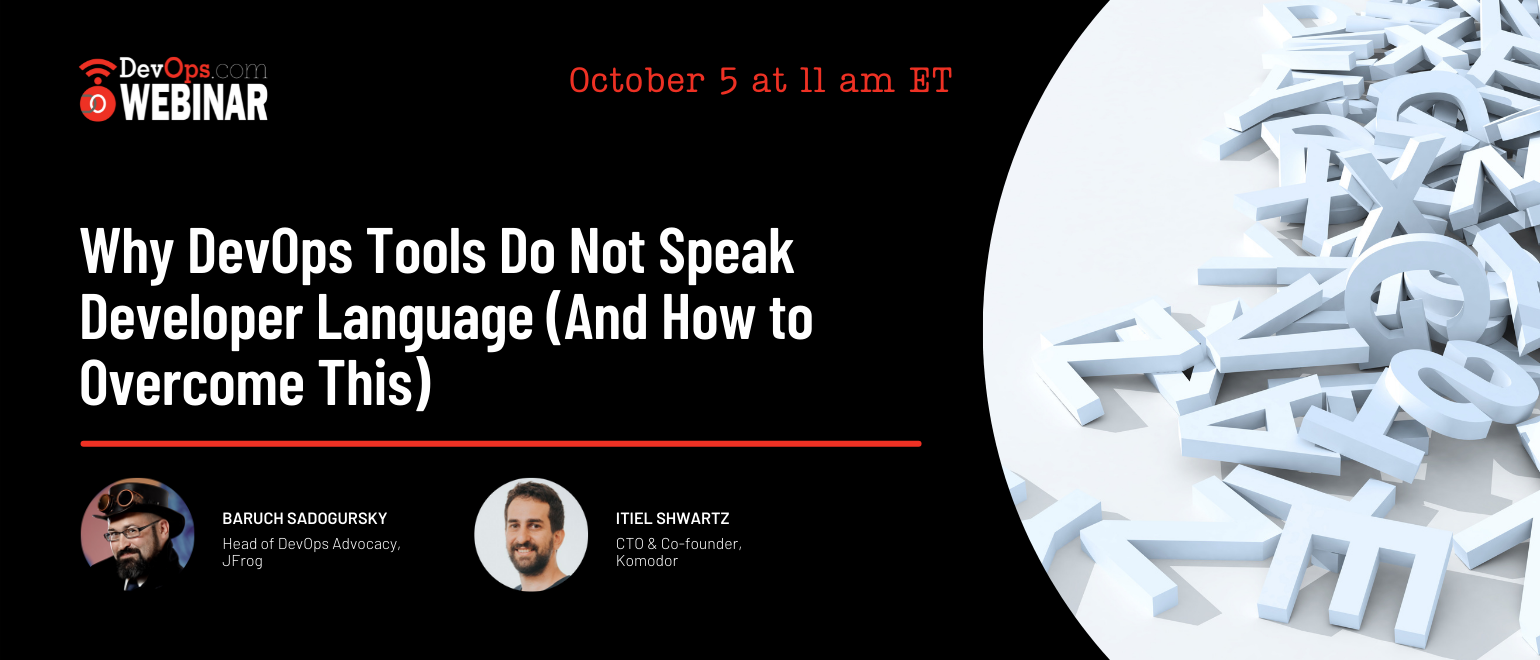Why DevOps Tools Do Not Speak Developer Language (And How to Overcome This)
Webinar
Think About Your Audience Before Choosing a Webinar Title

Sponsored by KOMODOR
Tuesday, October 5, 2021
11 a.m. ET
What You’ll Learn in This Webinar
The rise of DevOps and Agile over the past few years has led to a shift in responsibilities. Gone are the days when troubleshooting Kubernetes issues rested solely in the hands of DevOps teams. Today, developers are expected to own their code and will find themselves on-call to troubleshoot their apps if an issue arises.
This poses a question, however: Are developers equipped with the right tools to effectively manage the troubleshooting process? After all, many of the tools they rely on to figure out root causes were initially built with DevOps teams in mind.
Join Baruch Sadogursky, head of DevOps advocacy at JFrog and Itiel Shwartz, CTO and co-founder at Komodor as they discuss:
- The gap between DevOps teams and developers when it comes to troubleshooting K8s issues
- Why current DevOps tools do not speak “developer's language"
- Best practices and recommended tools to empower dev teams to troubleshoot independently
Baruch Sadogursky
Head of DevOps Advocacy - JFrog
Baruch Sadogursky (@jbaruch) did Java before it had generics, DevOps before there was Docker, and DevRel before it had a name. Now Baruch helps engineers solve problems and helps companies help engineers solve problems. He is a co-author of the "Liquid Software" and "DevOps Tools for Java Developers" books, serves on multiple conference program committees, and regularly speaks at numerous most prestigious industry conferences, including Kubecon, JavaOne (RIP), Devoxx, QCon, DevRelCon, DevOpsDays (all over), DevOops (not a typo) and others.
Itiel Shwartz
CTO & Co-founder - Komodor
Itiel started out at eBay [Forter], then went on to become the first developer at Rookout. He is a backend and infra developer turned “DevOps” and an avid public speaker that loves to talk about things like: infrastructure, Kubernetes, Python observability and R&D culture.







